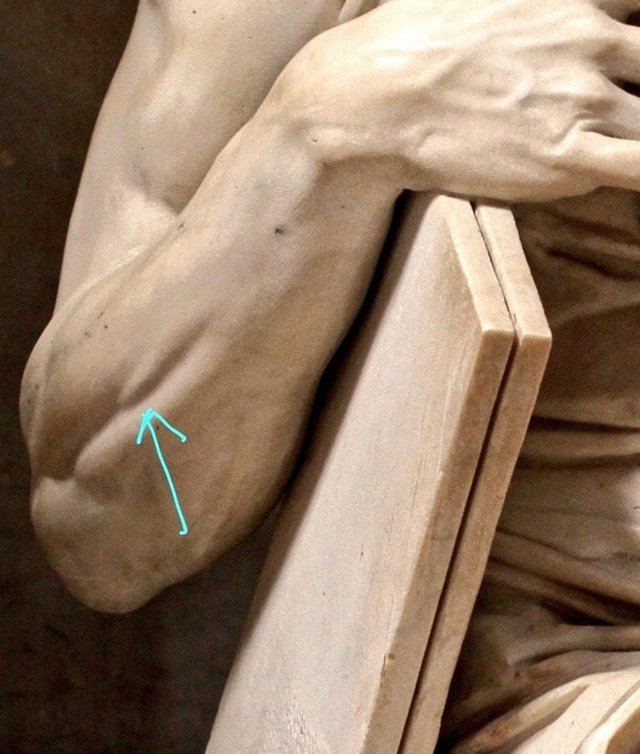This is the right forearm of Michelangelo's Moses (c. 1513-1515)

The arrow points to a small muscle called the extensor digiti minimi, which only contracts when the pinky is lifted; otherwise, it is invisible.
Most of Michelangelo's sculptures are painstakingly detailed, and you can clearly see his obsession with the human body, which he saw as a physical representation of the soul. Michelangelo always preferred sculpting over painting.
And while he was extremely dedicated to his craft, Michelangelo was also human. One of my favorite letters of all time is the one in which he writes to Giovanni da Pistoia (a member of the Florentine Academy) while painting the Sistine Chapel:
"I've already grown a goiter from this torture, swollen up here like a cat from Lombardy (or anywhere where the stagnant water's poison).
My stomach's squashed under my chin, my beard's pointing at heaven, my brain's crushed in a casket, my breast twists like a harpy's. My brush, above me all the time, dribbles the paint so my face makes a fine floor for droppings!
My haunches are grinding into my guts, my poor ass strains to work as a counterweight, every gesture I make is blind and aimless.
My skin hangs loose below me, my spine's all knotted from folding over itself, I'm bent taut as a Syrian bow.
And because I'm like this, my thoughts are crazy perfidious tripe:
anyone shoots badly through a crooked blowpipe.
My painting is dead.
Defend it for me, Giovanni, protect my honor.
I am not in the right place—I am not a painter."